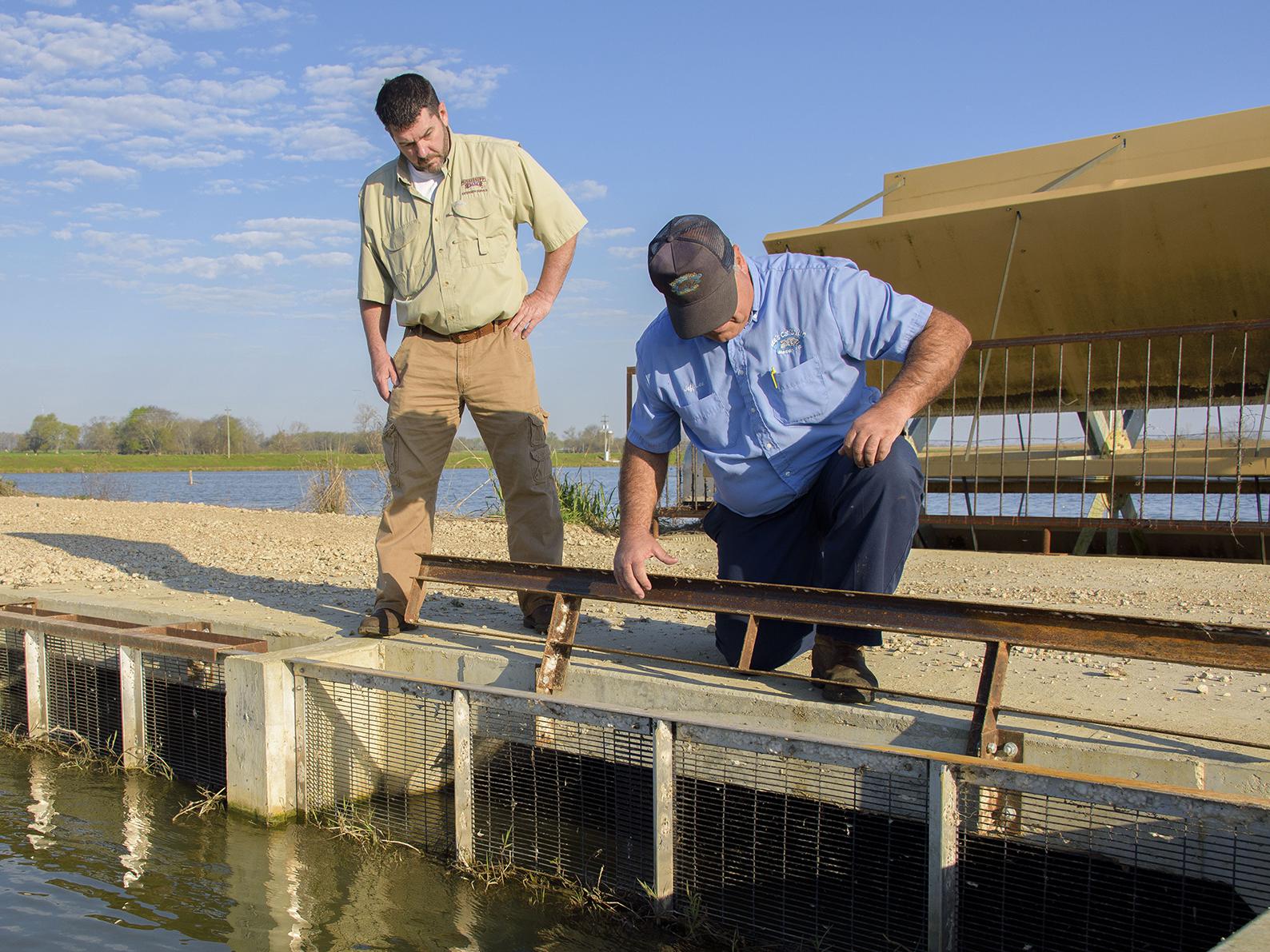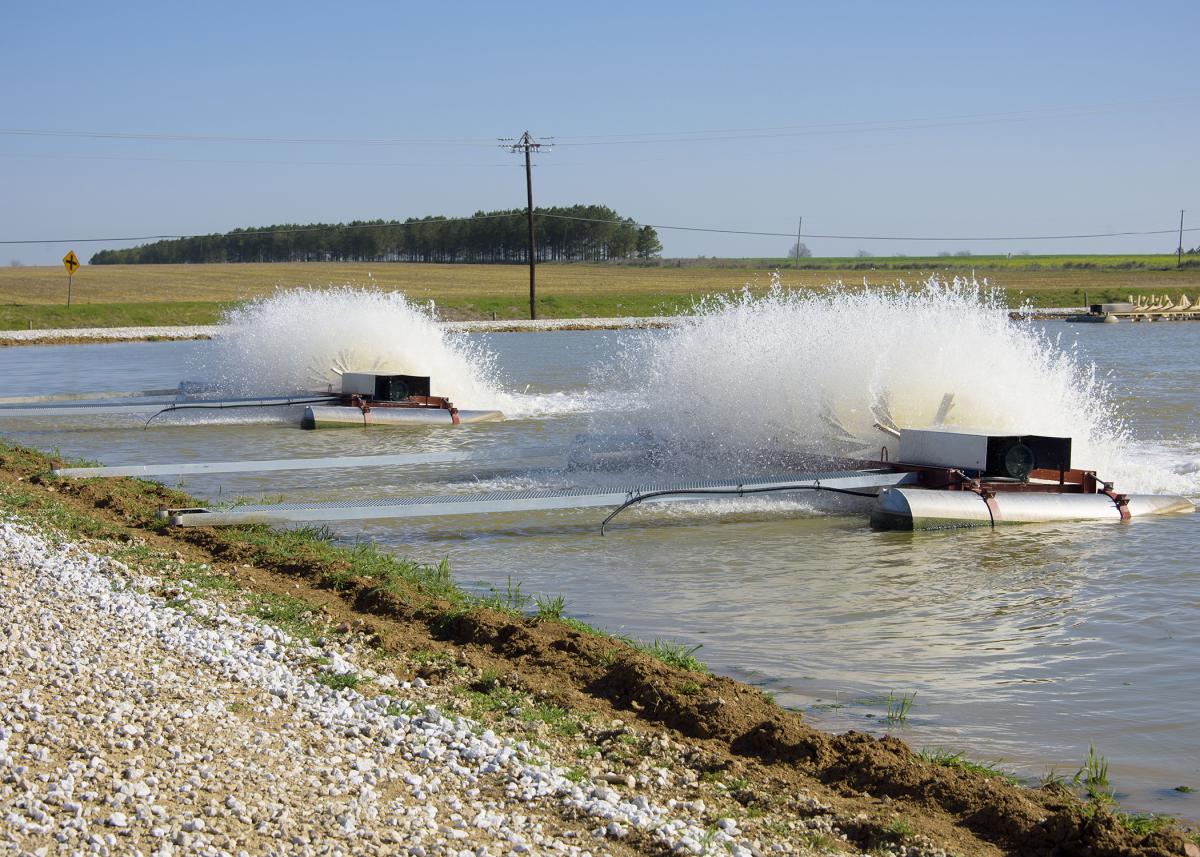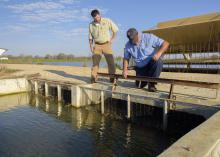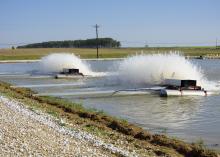Information Possibly Outdated
The information presented on this page was originally released on April 17, 2017. It may not be outdated, but please search our site for more current information. If you plan to quote or reference this information in a publication, please check with the Extension specialist or author before proceeding.
Smaller catfish ponds intensify production
MACON, Miss. -- Mississippi has a long history of catfish production, but recent advances in management and production are changing the way some ponds look and operate.
Catfish ponds have traditionally been rectangular, shallow and large, usually about 10 acres of water. Today, some existing ponds are split in half to make two equal-sized, intensively managed ponds. Another new approach is to use levees to split ponds into cells with fish raised in 20 percent of the area and the other 80 percent used as a lagoon that helps oxygenate water.
Mark Peterman, area aquaculture specialist with the Mississippi State University Extension Service, said many catfish producers in east Mississippi are intensifying their operations when renovating catfish ponds.
“Although they require more active management, the smaller, intensely managed ponds can be profitable in certain farm situations,” Peterman said.
A traditional pond is stocked with 7,000 young, fingerling catfish per acre. While catfish can move about the entire pond, they tend to congregate in zones of richly oxygenated water created by aerators. Factors are unique at every farm, but traditional catfish ponds usually can break even when they harvest 9,000 pounds of catfish per acre.
“Many people continue to use and remain productive with the 10-acre ponds,” Peterman said. “Profitability depends on the cost of feed, pond bank fish price and the level of effort you are willing to invest.”
Each intensively managed pond, usually covering 4 to 6 acres, is made from a renovated 10-acre pond. These smaller ponds are stocked at 10,000 fingerlings per acre.
“Intensively managed ponds push the envelope,” Peterman said. “They are small ponds stocked and aerated at higher rates than traditional ponds.”
Although costs vary by farm and fluctuate with the cost of feed and other inputs, intensively managed ponds must produce about 12,000 pounds of catfish per acre to break even.
Split-cell ponds, a newer variation of the intensively managed pond, house fish in a small area, excluding them from the larger lagoon.
“A levee divides the pond sections, but it has open channels to allow for water exchange,” Peterman said. “During daylight hours, water moves from the lagoon where photosynthesis is occurring to the side containing the fish. When the sun goes down, the algae stop producing oxygen, so aerators are turned on to produce oxygen for the fish.”
Split-cell ponds are stocked at 15,000 fingerlings per acre. The number of fish is based on the entire acreage of the pond and lagoon, but they live in 20 percent of the water. These ponds must produce about 16,000 pounds of catfish per acre to break even.
Jeff Lee, a partner in Lee’s Catfish in Macon, has about 50 acres of split-cell catfish ponds among his 250 total acres. He is in the process of converting other ponds to this management method as they are renovated.
“Land prices have gotten high in this area, and this is a way to do more on a smaller footprint,” Lee said.
He said when his ponds were built in the 1980s and 1990s, the industry thought bigger was better, but smaller ponds allow him to intensify production.
“Because it’s more intense, if the power goes off or you have a problem, you can get in trouble in a hurry,” Lee said. “You have a lot of fish in a small area, so you have more risk.”
Predatory birds are not as much of a problem on the smaller ponds, as they like the larger pond banks found on traditional ponds for takeoff and landing. Another advantage of smaller ponds is seen at feeding time.
“You’re throwing the food on top of the fish. They’re not out visiting the neighbors, and they will feed even when they’re not hungry if the food is there,” Lee said.
The MSU Extension Service supports the catfish industry in the state, offering information and research data to answer questions posed by producers.
“If farmers are looking to intensify their operations, we can provide the information for them to achieve their management objectives,” Peterman said. “Extension focuses on educational programming coordinated through the local county offices, facilitates interaction between researchers and farmers, and provides information on a one-on-one basis as well as collectively through events, a website and newsletters.”





